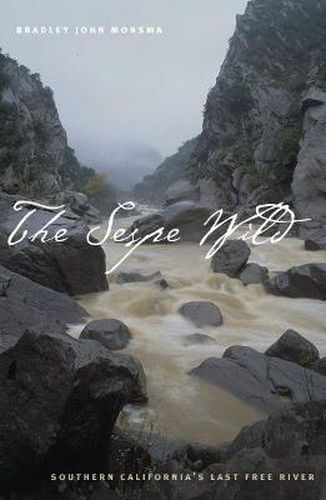Readings Newsletter
Become a Readings Member to make your shopping experience even easier.
Sign in or sign up for free!
You’re not far away from qualifying for FREE standard shipping within Australia
You’ve qualified for FREE standard shipping within Australia
The cart is loading…






Fifty miles northwest of Los Angeles, Sespe Creek flows through some of the wildest territory in California. To nature writer and outdoorsman Bradley John Monsma, it is the place
that teaches me to be fully alive,
a place that reminds us of what we’ve lost and inspires us to love what’s left.
The Sespe Wild
chronicles Monsma’s exploration of this fantastic region. His attention ranges from the physical Sespe to its subsurface geology, and he discusses both the Chumash people who first occupied it and the impact of Spanish and American settlers. He also considers the Sespe through the eyes of some of its nonhuman populations - the nearly extinct condors, the vanished grizzlies, the mountain sheep, steelhead trout, and red-legged frogs. He ponders the tension between preservation and management of wilderness and the critical issues that arise wherever wilderness and cities meet. Monsma’s informative, nuanced, and witty meditation on one of California’s last best places brilliantly combines history with attentive observations on the natural world, the symbolic and spiritual levels of human experience with the land, and the power of the land’s ongoing creation and renewal.
$9.00 standard shipping within Australia
FREE standard shipping within Australia for orders over $100.00
Express & International shipping calculated at checkout
Fifty miles northwest of Los Angeles, Sespe Creek flows through some of the wildest territory in California. To nature writer and outdoorsman Bradley John Monsma, it is the place
that teaches me to be fully alive,
a place that reminds us of what we’ve lost and inspires us to love what’s left.
The Sespe Wild
chronicles Monsma’s exploration of this fantastic region. His attention ranges from the physical Sespe to its subsurface geology, and he discusses both the Chumash people who first occupied it and the impact of Spanish and American settlers. He also considers the Sespe through the eyes of some of its nonhuman populations - the nearly extinct condors, the vanished grizzlies, the mountain sheep, steelhead trout, and red-legged frogs. He ponders the tension between preservation and management of wilderness and the critical issues that arise wherever wilderness and cities meet. Monsma’s informative, nuanced, and witty meditation on one of California’s last best places brilliantly combines history with attentive observations on the natural world, the symbolic and spiritual levels of human experience with the land, and the power of the land’s ongoing creation and renewal.